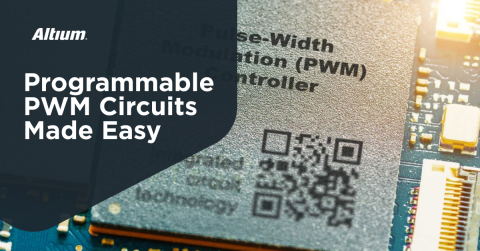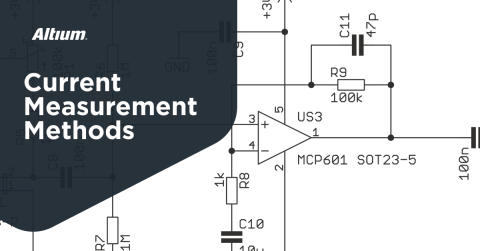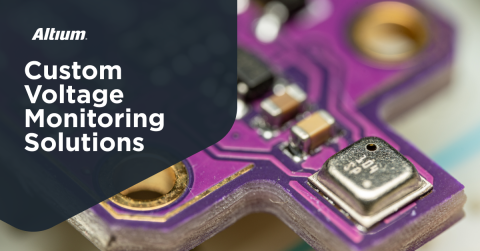GreenPAK vs FPGA vs CPLD: Which Is Right for Your Design?

Making an ASIC the traditional way is no easy task, but now designers can take control of their component designs with programmable logic. There are three options for designing ASICs: CPLDs, FPGAs, or mixed-signal processors. These three approaches allow a designer to essentially create a custom processor which can even be programmed on the fly.
If none of the available off-the-shelf component options work for your system, which type of processor should you use in applications demanding custom logic?
This article outlines the advantages of each type of component when custom logic is needed. While any of these components can be used for custom logic processing, only GreenPAK offers the ability to implement analog sensing and mixed-signal processing without using external components. With these options, different types of ASICs can be constructed, ranging from digital processors with custom logic to highly compact and reprogrammable mixed-signal ASICs.
FPGAs For Custom Logic
In applications requiring a mix of custom logic with standard computing and digital interfaces, FPGAs are really the workhorse. They act as a fully custom application processor thanks to their very large amounts of logic cells and processing power. They also have an advantage in terms of compute efficiency in that the FPGA instantiates digital logic directly into silicon, just like CPLDs and mixed-signal processors.
Why use FPGAs? There are several reasons they are widely used in embedded systems:
- They can run embedded applications or an embedded OS
- Embedded applications can access custom digital logic configured directly in logic gates on silicon
- Many FPGAs offer a very large number of I/Os
- FPGA vendors offer IP that can support standard computing interfaces
- Higher-end FPGAs run with fast clocks and provide low-latency digital processing
The biggest drawback of an FPGA is cost and power requirements. There are not many companies making small FPGAs with low pin count and low power consumption. Most of the FPGAs on the market are very large components with hundreds or thousands of pins, processors found in high-computing systems, personal computers, servers, and computing peripherals. This means that FPGAs are not suitable for small embedded systems or as ASIC replacements.
Complex Programmable Logic Devices (CPLD)
Another device type that scales down in size while offering custom logic programmability is a CPLD. In a CPLD, the device’s custom logic is programmed in a vendor application, with custom logic processing steps built from standard logic elements. Typically, this includes flip-flops, LUTs, and standard logic gates. CPLDs form a standard digital base for communicating with other components of the system, such as an I2C or SPI interface. This also allows the device to interface with the microcontroller or other processor.
CPLDs do not run an embedded application or perform digital processing. Instead, all logic operations are programmed into logic cells on the device, just like an FPGA. The main difference between an FPGA and a CPLD is one of size: CPLDs do not contain nearly enough logic to hold a processor core that can run an embedded OS. We can get an idea of CPLD capabilities by looking at a typical CPLD block diagram as shown below.
CPLDs are meant for fast logic communication with very small footprints, not for running embedded applications that interface with custom logic. If an embedded application needs to run in the system, then an external microcontroller is needed.
FPGAs and CPLDs both only have digital I/O; there is no capability for capturing analog signals with the device. External analog circuitry is needed, or an ADC is needed to measure or monitor analog signals. These external components really are a significant burden and increase system size and cost significantly. This is where mixed-signal processors become the best option for small custom logic implementation with analog signal processing capability.
Mixed-Signal Processors With Custom Logic
Mixed-signal processors like GreenPAK from Renesas provide a mix of CPLD and analog processing capabilities in a single component. These processors integrate multiple features and components into a single package that enables analog signal acquisition and processing of digital logic.
|
Component |
Function |
|
Standard logic gates and flip-flops |
Manipulate input logic signals |
|
Look-up tables (LUTs) |
Create custom truth tables |
|
GPIOs and serial interfaces |
Receive and source logic signals |
|
Analog comparators with selectable reference |
Capture analog signals and assign logic states based on thresholding |
|
Analog-to-digital converter (ADC) |
Provides more granular measurements of an analog signal |
The use of analog comparators is the simplest way to assign logic states to an analog signal based on its amplitude. This would normally take comparators in an integrated circuit, as well as some way to set references and possibly make them programmable. Integrating this into a single mixed-signal processor dramatically reduces the component count required for this capability.
GreenPAK provides the fastest path for developing a mixed-signal processor thanks to the graphical development tools in the Go Configure software application. These devices also come in very small footprints and will typically eliminate a dozen or more other components which would be used to design an analog front end.
The mixed-signal processor components and developer tools in Renesas GreenPAK give designers the ability to develop fully custom digital, analog, or mixed signal ICs. These programmable mixed-signal processors allow consolidation of functions found in clock and signal management circuitry, allowing for smaller, more efficient systems. To learn more, take a look at the GreenPAK components and reference examples.
Whether you need to build reliable power electronics or advanced digital systems, use the complete set of PCB design features and world-class CAD tools offered by Altium to implement your GreenPAK solutions. Altium provides the world’s premier electronic product development platform, complete with the industry’s best PCB design tools and cross-disciplinary collaboration features for advanced design teams. Contact an expert at Altium today!











 Back
Back